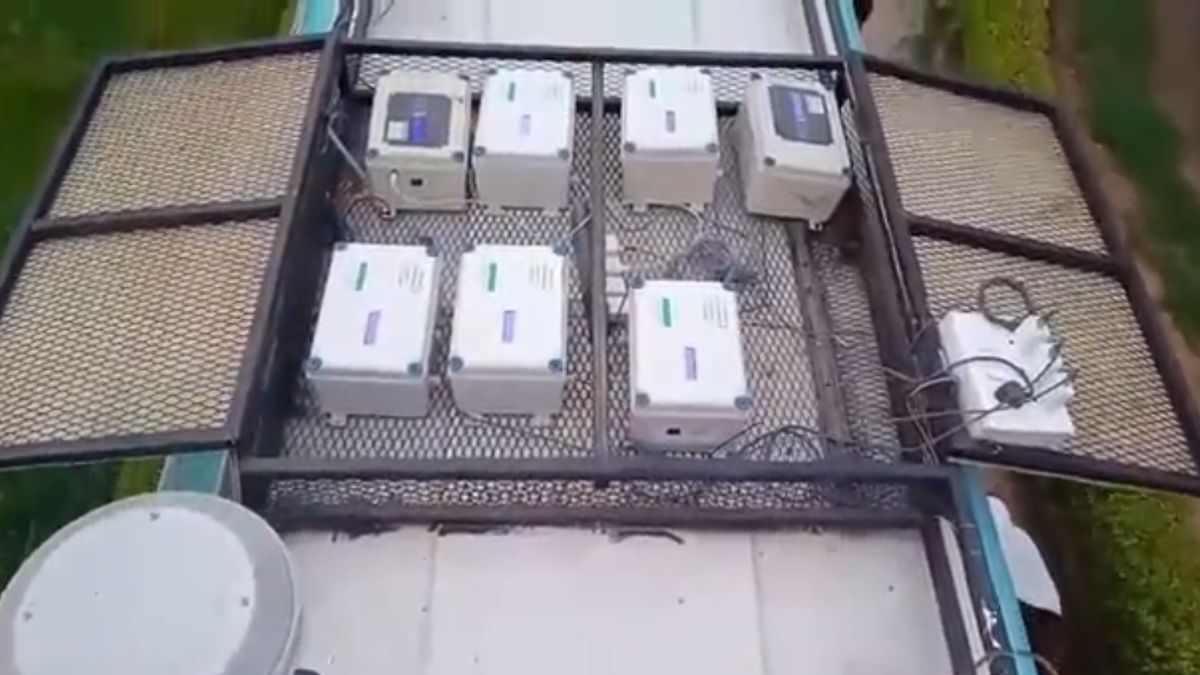AI-powered air quality sensors in Uttar Pradesh reveal disturbing pollution trend
 Air quality sensors aboard the mobile units by IIT Kanpur | IITK/Video Screengrab
Air quality sensors aboard the mobile units by IIT Kanpur | IITK/Video Screengrab
When Professor Sachchida Nand Tripathi from IIT Kanpur placed low-cost air quality sensors across Uttar Pradesh, he probably didn’t expect to uncover some uncomfortable truths. Places like Azamgarh and Kushinagar—largely rural areas—turned out to have air quality as bad as Delhi’s worst days.
This discovery lies at the heart of a collaboration between IIT Kanpur’s Airawat Research Foundation and IBM to use Artificial Intelligence to fight air pollution—one sensor at a time.
Data has been a major blind spot when it comes to tackling air pollution in the country. In Uttar Pradesh and Bihar, two of the country’s most populous states, there are just 110 government air quality monitors. That’s like trying to understand the weather across all of Europe with a handful of thermometers.
The IIT Kanpur team has now changed that by deploying over 1,300 low-cost sensors across these states in just two years. They put one in nearly every administrative block, creating a monitoring network that’s twelve times denser than what existed before.
Using artificial intelligence to analyse the flood of data from these sensors, researchers discovered massive ‘airsheds’ (pollution neighbourhoods) that span 15-20 districts across Bihar and UP. This means if one area has a problem, it’s likely affecting its neighbours too.
The AI can also pinpoint exactly what’s causing pollution at any given moment. Is it dust from construction? Smoke from crop burning? Industrial emissions? The system can also track how pollution hotspots shift from winter to summer.
Part of the IIT Kanpur arsenal are mobile laboratories—vans packed with sophisticated instruments that can travel anywhere. In just 12 days in Lucknow, one laboratory identified a specific industrial pollution source between two landmarks that nobody knew existed. The lab detected metal pollutants, coal burning, and even e-waste incineration, complete with timestamps showing exactly when these emissions peaked.
One of the biggest surprises has been the state of rural air quality. Rural areas are facing serious air quality issues stemming from stubble burning, biomass cooking, and other sources.
IBM’s role is to make it work to scale. Having thousands of sensors generating 200,000 data points requires serious computing power to make sense of it all. The partnership aims to scale these solutions across India, turning local innovations into national capabilities.
The system can now predict air quality at a half-kilometre resolution, essentially telling people in the same neighbourhood how the air quality in their area differs from that of another closely situated neighbourhood.
The IITK sensors are inexpensive systems, designed for Indian conditions.
The UP government is already planning to expand this approach with a ₹5,000 crore World Bank project.
Sci/Tech